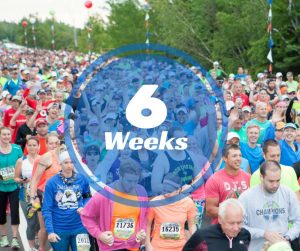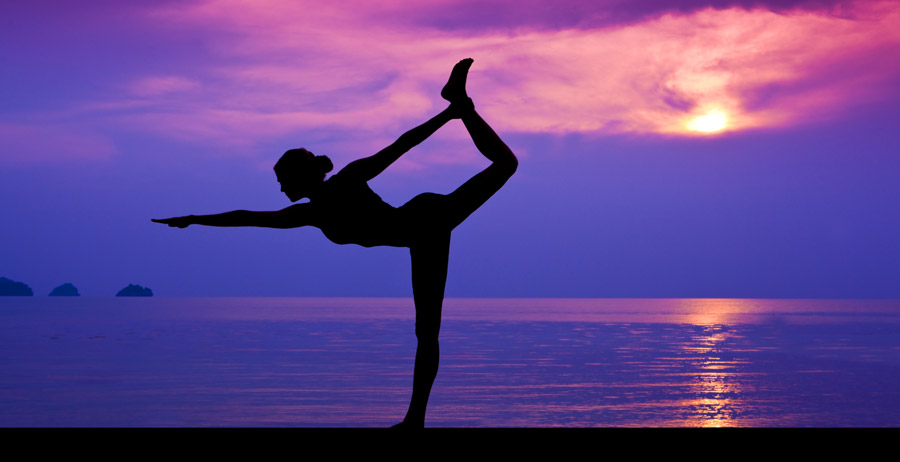Time-Honored Classic Stress Management Techniques
Yes or No?
The Huffington Post ran an article by Kate Bratskeir, their Food and Health Editor, in April of 2013. She asked Dr. David Posen, and Dr. Kathleen Hall, if the old stress management techniques still work in today’s more more highly charged environment. Are their some that might not work so well today?
According to Ms. Braatskeir’s article the following methods still have their place in the stress buster lexicon:
- Squeezing a stress ball
- Letting yourself have a good cry
- Letting loose on the dance floor
- Talking it out
- Shouting It out
- A good, old-fashioned time-out
- Breaking something
- Writing an angry letter that won’t be seen again
- Taking a deep breath
- The pendulum (collision balls) swing
- Exercising
As you can see, many of these are similar to one another…talking, shouting, writing an angry letter for the shredder are right down the same alley. Letting loose on the dance floor, squeezing a stress ball, breaking something, and exercising take advantage of the release of endorphins that exercise produces. Crying, a time-out, watching the pendulum swing are less involved physically, but can engage you mentally. Few professionals would cross these activities off their list of effective coping tools.
In honor of these traditional methods here is a favorite coping exercise from Donald A. Tubesing, PhD’s series “Structured Exercises in Stress Management Vol 3”.
Eight-Minute Stress Break
Participants learn a 15-step stretching routine that can be used any time of the day.
Goals
To demonstrate the effectiveness of exercise as a stress management technique.
To stretch all the major muscle groups.
Group Size
Unlimited, as long as there is sufficient space for everyone to move freely.
Time Frame
10 minutes
Materials
CD player and peppy music.
Process
1) The trainer briefly describes typical benefits of stretching and exercise as stress management techniques:
- Stretching and vigorous exercise both help discharge accumulated physical tension from the various muscle groups.
- The increased flow of blood and oxygen to the muscles usually stimulates an increased energy level.
- Both types of physical activity provide a distraction from emotional or mental strain.
- Stretching and exercise are effective preventive measures for dealing with stress by systematically letting go of tension before it accumulates to unhealthy proportions. These techniques also are effective in crisis situations to relieve the physical effects of stress.
2) The trainer turns on the music and participants join in as he/she demonstrates the Eight-Minute Stress Break routine which can easily be incorporated into a busy schedule.
Variations
- Choose only a few exercises to teach during this presentation (eg, all upper body stretches). Then sprinkle the other routines throughout the remainder of the session.
- To model how this skill could be used in real life, teach the whole sequence at once and then sprinkle repeat performances as mini stretch breaks during unexpected or particularly stressful moments in the remainder of the learning experience.
- If the course is several sessions long, go through the sequence once at every meeting in order to entrench the routine in participants’ minds.
- After Step 2 hand out the list of 14 stretches. Ask people to identify their favorites and make a list of those they especially want to use in the future and the situations where they most need to!
Eight-Minute Stress Break Stretchers
The 360 Stretch
- Begin with your body relaxed, arms and hands loose at your side. Pull your right shoulder up and with one smooth movement, bring the shoulder back and around, making a complete circle.
- Repeat this same circular motion with the left shoulder.
- Continue stretching one shoulder, then the other, 5 times each. The reverse the direction, using alternate shoulders, 5 times each. This should loosen up your neck, back, and shoulder – place where most people store tension.
Starfish Stretch
- Begin with your arms stretched overhead, slightly bent, eyes turned upward.
- In a single motion, open your hands, spread your fingers wide, and reach up as high as you can. Hold that position for a few seconds. Then close your fists and lower your arms, with elbows bent. Rest a few seconds and then repeat the starfish stretch/rest sequence 10 to 15 times.
- For variety, stretch to the side.
Snow Angels
- Allow your arms to hang loose at your sides. Begin to loosen your wrists by shaking your hands, allowing them to flop as freely as possible.
- Continue to shake and flop as you slowly raise your arms to the side and up until your hands touch overhead. Then allow your arms to gradually drop, still shaking and loosening the wrists.
Tall Grass Stalk
- Extend your arms out in front of you.
- While concentrating on your shoulders, slowly sweep your hands and arms to the side and back, as if pushing tall grass out of the way.
- You should feel a pull along your shoulders and arms.
- Stretch your arms out again and “stalk” for 10 more steps.
Bunny Hop
- Put your hands on your hips and hop twice on your right foot. Now hop twice on your left foot. Continue these double hops, alternating feet and adding a side kick or a cross kick on the second hop.
- Continue hopping and kicking for 30 seconds, varying your tempo and kick height.
Hoe-Down
- Start by getting centered, feet firmly planted, knees slightly bent.
- Lift your right knee up towards your chest, slap it with your left hand and then lower your leg and stretch it to the side, toes pointing outward. Repeat the hoe-down lift 3 more times and then try the left leg for 4 counts.
Cloud Walk
- This is a slow step, rolling from heel to toe, one foot at a time, gently stretching the legs and feet. Your whole body should be relaxed.
- Pick up the tempo of the heel-toe roll until you reach a slow jog, raising your feet slightly off the floor at each step. Continue at this pace for 30 seconds.
Dippity-Do
- Start with your legs slightly apart.
- Dip your body into an easy knee-bend and then spring back to the upright position.
- Continue to bend and spring back for 30 seconds, adding rhythmic arm swings as you increase your pace.
Arch Stretch
- With knees slightly bent, join your hands comfortably behind your back.
- Slowly arch your back, letting your hands and stiff arms pull your shoulders and head down toward the floor.
- Hold for 5 counts and then relax, allowing your head to fall forward and your shoulders to curl toward the front.
- Repeat 7 times.
Twister
- With feet shoulder width apart and knees bent, put your hands on your hips.
- Keep your back straight as you twist your shoulders and trunk to the right 3 times and then return to face forward.
- Now twist to the opposite side for 3 counts and return to the center.
- Continue to twist for 8 sets.
Body Bounce
- With feet apart, arms at your sides, bend sideways at the waist, stretching your hand down to your leg as you straighten up.
- Repeat the stretch and bounce to the other side. Do 5 body bounces on each side.
- Now add your arms to the stretching movement. With your left arm, reach up and over as you bounce to the left 3 counts.
- Do 5 sets on each side.
Sneak Peek
- Stand straight with your neck, shoulders and back as relaxed as possible.
- Tilt your head to the left. Now slowly roll your head so that your chin falls to your chest and then comes up as your head tilts to the right. Now look back over your right shoulder, hold the pose and then relax.
- Repeat the stretch, this time starting with your head tilted to the right and ending with a sneak peek over your left shoulder.
- Do four peeks on each side.
The Wave
- Stand straight with your arms at your sides, palms facing out.
- As you take a long deep breath, slowly (4 counts) raise your arms up over your head. Now, as you exhale slowly, bring your arms back down, palms facing downward (4 counts).
- Repeat this languid wave 6 times.
Hang Loose
- Time to shake out your body.
- Flap your arms, twist your wrists, shrug your shoulders, jiggle your legs, shake your feet, flex your knees.
- Bounce your booty until your whole body feels tingly, loose and relaxed.















 The term “Well-being” may have come along at just the right time. Public speakers and marketers are re-branding “wellness” as “well-being” by saying that well-being is more complete, more holistic. Well-being, they say, incorporates the whole person, their environment, their financial picture, their career, etc. On the one hand it’s too bad that we have to invent a new term to refresh our memory of what wellness really is. On the other, with the way that corporations and organizations have allowed their wellness programs and products to deteriorate into overly simplistic efforts, based on single-measurable-variable pieces of research, well-being may be the kick in the pants that reminds us about “Whole-Person Wellness”.
The term “Well-being” may have come along at just the right time. Public speakers and marketers are re-branding “wellness” as “well-being” by saying that well-being is more complete, more holistic. Well-being, they say, incorporates the whole person, their environment, their financial picture, their career, etc. On the one hand it’s too bad that we have to invent a new term to refresh our memory of what wellness really is. On the other, with the way that corporations and organizations have allowed their wellness programs and products to deteriorate into overly simplistic efforts, based on single-measurable-variable pieces of research, well-being may be the kick in the pants that reminds us about “Whole-Person Wellness”. that people are a lot more complicated. The result has been too many health behavior studies measuring one aspect of activity, one blood lipid level, one blood sugar level. While those little building blocks all help to assemble the scientific foundation we need, too much is concluded from them. In our online digital world a simple study with twenty subjects, run one time, has its results proclaimed as headline news.
that people are a lot more complicated. The result has been too many health behavior studies measuring one aspect of activity, one blood lipid level, one blood sugar level. While those little building blocks all help to assemble the scientific foundation we need, too much is concluded from them. In our online digital world a simple study with twenty subjects, run one time, has its results proclaimed as headline news.

 health and well-being. We are seeing how having safe green spaces to walk, play and exercise increase the health of communities. Part of our approach to wellness/well-being is to step outside of a myopic corporate perspective and remember that not everyone works for a company with the benefits of a wellness program. Being inclusive of under-served populations in both rural and urban areas, Native American/First Nations Reservations, and others means maintaining this big-picture view of what wellness/well-being means.
health and well-being. We are seeing how having safe green spaces to walk, play and exercise increase the health of communities. Part of our approach to wellness/well-being is to step outside of a myopic corporate perspective and remember that not everyone works for a company with the benefits of a wellness program. Being inclusive of under-served populations in both rural and urban areas, Native American/First Nations Reservations, and others means maintaining this big-picture view of what wellness/well-being means.













